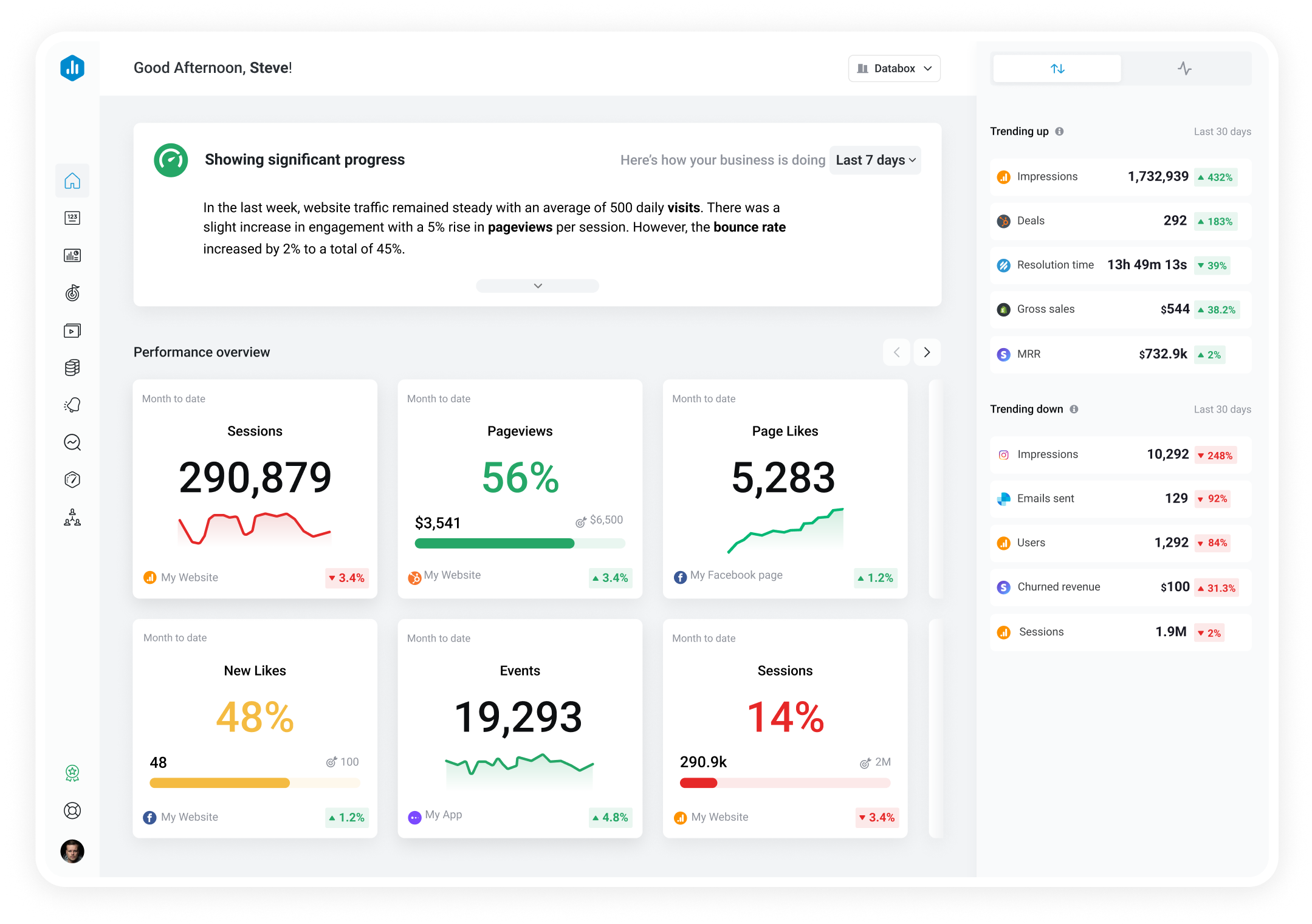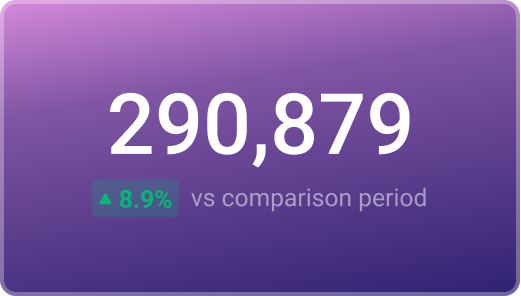Track all of your key business metrics from one screen
GET STARTED
 Shopify
Unfulfilled Orders
Shopify
Unfulfilled Orders Unfulfilled orders is a metric that measures the number of orders that have not yet been shipped or delivered to the customer. It helps merchants keep track of outstanding orders and ensure timely fulfillment.
With Databox you can track all your metrics from various data sources in one place.

Used to show a simple Metric or to draw attention to one key number.
Databox is a business analytics software that allows you to track and visualize your most important metrics from any data source in one centralized platform.
To track Unfulfilled Orders using Databox, follow these steps:
 Goals
Goals Scorecards
Scorecards Metric Digest
Metric Digest Metric Builder
Metric Builder Data Calculations
Data Calculations Performance Screen
Performance ScreenThis dashboard allows a Shopify store owner to see online sales stats in-line with Facebook Ads and Google Analytics 4. Focus in on top product performance, ecommerce purchases, and audience overviews.



Use this Shopify report to share important ecommerce performance metrics around orders, sales, products, customers, and more.

